#Sumatra tsunami
Explore tagged Tumblr posts
Text
Memorials were held for the victims of the tsunami that hit the Indian Ocean region, killing more than 200,000 people in one of modern history’s worst natural disasters.
On December 26, 2004, a magnitude-9.1 earthquake off Indonesia’s western tip generated a series of massive waves that pummelled the coastline of 14 countries from Indonesia to Somalia.
In Indonesia’s Aceh province, where more than 100,000 people were killed, a siren rang out at the Baiturrahman Grand Mosque to kick off a series of memorials around the region, including Sri Lanka, India and Thailand, which the tsunami hit hours later.
“I thought it was doomsday,” said Hasnawati, a 54-year-old teacher who goes by one name, at the Indonesian mosque which was damaged by the tsunami.
“On a Sunday morning, when our family were all laughing together, suddenly disaster struck and everything was gone. I can’t describe it with words.”
Some mourners sat and cried at Aceh’s Ulee Lheue mass grave, where about 14,000 are buried, while some villages held their own prayers around the province as they remembered the tragedy that devastated entire communities.
For those not born yet, or too young to remember, the Sumatra earthquake created a tsunami that essentially spread across the Indian Ocean hitting India the hardest and making it all the way to Africa. Before this event, tsunamis were sometimes called “tidal waves”. This event cemented “tsunami” as the word for these waves in modern nomenclature.
25 notes
·
View notes
Text
Here's to all of the victims who lost their lives in the Sumatra earthquake and Tsunami twenty years ago, and to all of those who were effected either by losing family, friends, their homes, and their livelihoods.
You have not been forgotten. You will not be forgotten.

9 notes
·
View notes
Note
🪩
The other big clue about the 1700 Cascadia quake, aside from that tsunami, was something called a "ghost forest" - a collection of dead tree stumps all killed at once by inundation with salt water when the land dropped by six feet all at once. Tree ring analysis in comparison with trees still living nearby dated the earthquake to sometime around 1699 or 1700, which matched up with that "orphan tsunami"!
[send me an emoji and I will send you a fun* fact about my special interest(s)] *“fun” is kind of relative here tbh
#I love both of the phrases 'ghost forest' and 'orphan tsunami'#the estimated magnitude of that quake was 8.7-9.2#which is FUCKING ENORMOUS#in the same range as Sumatra 2004 or Alaska 1964#(yeah we might get one of those someday - could happen tomorrow or not in anyone living's lifetime)#(the weird thing about geological disasters is that they tend to happen on geological timescales)#('often' is measured in hundreds or even thousands of years)#(which tbh is kind of why I'm so chill about quakes)#(also I was in a bunch in SoCal plus Nisqually 2001 and most of the time it's 30-90 very dramatic seconds and then it's fine)#ask games
5 notes
·
View notes
Text
#Hurricane#Earthquake#Tsunami#Flood#Tornado#VolcanicEruption#Drought#Wildfire#Landslide#Avalanche#news#worldnews#indonesia#indonesianews#sumatra#sumatranews#flooding
0 notes
Text
Looking at historic tsunami records makes me think that tsunamis don't impact the San Francisco Bay much. The 1964 Alaska quake (second most powerful earthquake in seismographically recorded history), did massive damage across the Alaska's and British Columbia's coastal communities, killed 12 people in Crescent City.... and inside SF Bay?
Damage in San Francisco Bay was largely to pleasure boats. The highest damage was reported from marinas in Marin County where strong currents induced by the tsunami caused boats and floating piers to break loose and strike other craft. (x)
Or take the 1946 Aleutian Islands earthquake, which was "only" magnitude 8.6 (still a lot higher than today's earthquake) but generated an unusually powerful tsunami that killed 165 people in Hawaii (and one in California) -- i found an article about damage to Half Moon Bay but so far nothing about damage inside the SF bay
If you're in an ocean-facing area (Half Moon Bay, Monterey, West Marin, maybe even Outer Sunset), I would pay attention to the tsunami alerts. Everyone else in the Bay Area should go on with their day. Maybe if you're literally on the waterfront, get off the quay -- might as well right? But don't worry too much about it.
I'm in two different Discord channels talking about the tsunami warning in San Francisco Bay, one where people are going "do I need to be worried? should I evacuate? 😟" and the other going "holy shit, hurry up and meet me at my car at [intersection] so we can drive towards it to watch"
#yes both of these are very low death counts compared to recent Asian tsunamis#I started off researching damage to California specifically#maybe i'll make a followup post about Tohoku 2011 and Sumatra 2004 b/c they are interesting#apparently the 2011 tsunami did kill one person in CA as well though i haven't figured out what part of the state#that's vs 18k dead in japan#my point isn't that tsunami's aren't dangerous. just that they aren't dangerous inside the SF Bay!#tsunamis#earthquakes#california#current events
91 notes
·
View notes
Text

Nella sua rubrica del Foglio il giornalista Andrea Marcenero si dice dispiaciuto perché Sigfredo Ranucci non è morto mentre era a Sumatra nel 2005.
Le parole del figlio, Andrea Ranucci, sono da leggere:
"Caro Andrea,
fortunatamente mi sono imbattuto così poche volte nelle pagine del "giornale" in cui scrivi da non sapere né il tuo cognome né se tu - spero vivamente per la categoria di no - sia un giornalista professionista o un comico satirico, sono il figlio di Sigfrido Ranucci e nonostante alcune volte me ne sorprenda anche io, non sono ancora orfano di padre.
Vivo da sempre con il pensiero, il timore che ogni volta che saluto mio padre possa essere l'ultima, del resto credo sia inevitabile quando vivi per decenni sotto scorta, quando hai sette anni e ci sono i proiettili nella cassetta della posta di casa tua, quando vai a mangiare al ristorante e ti consigliano di cambiare aria perché non sei ben gradito nella regione, quando ti svegli una mattina e trovi scientifica, polizia, carabinieri e DIGOS in giardino perché casualmente sono stati lasciati dei bossoli, quando ricevi giornalmente minacce, pacchi contenenti polvere da sparo e lettere minatorie, o semplicemente quando ti abitui a non poter salire in macchina con tuo padre.
Ricordo perfettamente il periodo dello Tsunami e dell'isola di Sumatra, che giusto per precisione si trova in Indonesia e non India, quando papà con il parere contrario del suo Direttore Roberto Morrione decise di raccontare la vicenda in uno dei luoghi più martoriati dalle inondazioni, lontano dalle comodità e dai luoghi privilegiati dai quali tutti i media scrivevano.
È uno dei primi ricordi di cui ho contezza, avevo 5 anni, mia sorella 6, mio fratello forse 8, eravamo in macchina, erano circa 40 ore che nessuno riuscisse ad avere contatti con papà, mamma tratteneva le lacrime a fatica, sola con noi tre, faceva finta che andasse tutto bene, forse è stata la prima volta che ho avuto la sensazione che dovessi percepire la vita con papà come se fosse a tempo, con una data di scadenza.
Ebbene sì, è tornato sano e salvo e a distanza di 20 anni purtroppo per te, Andrea, per fortuna per noi e credo di poter dire per il paese è ancora qui, a svolgere il suo lavoro come sempre, vivo e vegeto anche se in tanti lo vorrebbero morto.
Il morto del giorno è il giornalismo italiano, ancora una volta, e chi è l'assassino è evidente a tutti.”
Chapeau. Solidarietà a Ranucci, viva ammirazione per il suo coraggio e la sua forza. Evviva Report, uno dei pochi presidi di democrazia ancora presenti, capace di incarnare l'idea per cui il giornalismo deve essere il cane da guardia del potere e non, come spesso capita nel nostro paese, il cane da compagnia o, addirittura, da riporto.
@CarloCunegato
76 notes
·
View notes
Text
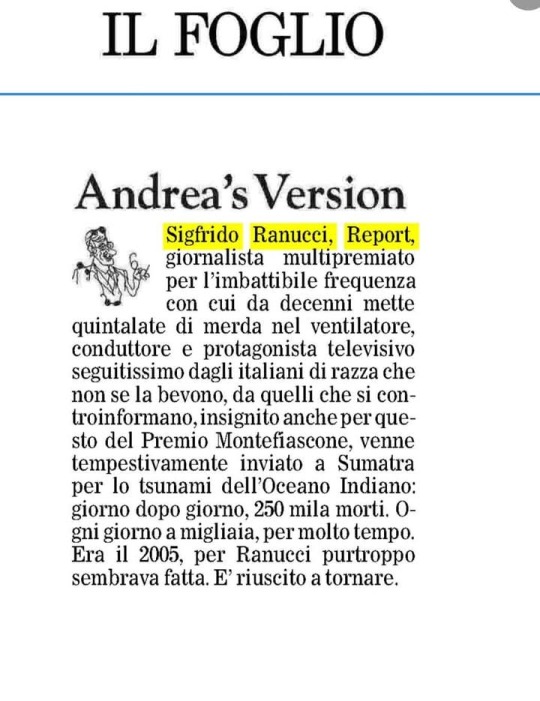
Caro Andrea, fortunatamente mi sono imbattuto così poche volte nelle pagine del "giornale" in cui scrivi da non sapere né il tuo cognome né se tu - spero vivamente per la categoria di no - sia un giornalista professionista o un comico satirico, sono il figlio di Sigfrido Ranucci e nonostante alcune volte me ne sorprenda anche io, non sono ancora orfano di padre.
Vivo da sempre con il pensiero, il timore che ogni volta che saluto mio padre possa essere l'ultima, del resto credo sia inevitabile quando vivi per decenni sotto scorta, quando hai sette anni e ci sono i proiettili nella cassetta della posta di casa tua, quando vai a mangiare al ristorante e ti consigliano di cambiare aria perché non sei ben gradito nella regione, quando ti svegli una mattina e trovi scientifica, polizia, carabinieri e DIGOS in giardino perché casualmente sono stati lasciati dei bossoli, quando ricevi giornalmente minacce, pacchi contenenti polvere da sparo e lettere minatorie, o semplicemente quando ti abitui a non poter salire in macchina con tuo padre.
Ricordo perfettamente il periodo dello Tsunami e dell'isola di Sumatra, che giusto per precisione si trova in Indonesia e non India, quando papà con il parere contrario del suo Direttore Roberto Morrione decise di raccontare la vicenda in uno dei luoghi più martoriati dalle inondazioni, lontano dalle comodità e dai luoghi privilegiati dai quali tutti i media scrivevano.
E' uno dei primi ricordi di cui ho contezza, avevo 5 anni, mia sorella 6, mio fratello forse 8, eravamo in macchina, erano circa 40 ore che nessuno riuscisse ad avere contatti con papà, mamma tratteneva le lacrime a fatica, sola con noi tre, faceva finta che andasse tutto bene, forse è stata la prima volta che ho avuto la sensazione che dovessi percepire la vita con papà come se fosse a tempo, con una data di scadenza.
Ebbene sì, è tornato sano e salvo e a distanza di 20 anni purtroppo per te, Andrea, per fortuna per noi e credo di poter dire per il paese è ancora qui, a svolgere il suo lavoro come sempre, vivo e vegeto anche se in tanti lo vorrebbero morto.
Il morto del giorno è il giornalismo italiano, ancora una volta, e chi è l'assassino è evidente a tutti."
22 notes
·
View notes
Text
i was never very good at math in school. but i don't think it's math's fault, i think it's adhd's. the way math is taught here exacerbates the weaknsses wrt studying consistently and turning in hw, especially when you must focus in class and things are not always explained well. something i realized after i graduated hs was that math felt fundamentally different when i actually read the chapters of the textbook, which i often hadn't done much at the time. i failed abysmally in my first semester of college b/c i did not understand what i needed to do
i see people sometimes talk about math and example problems with derision and it makes me sad b/c even in times like this i never felt math was useless. i had a bad experience with the classes but the math itself is a form of undeniable power. very specifically for me there was a period when i really actually came to understand what a sine and a cosine were, like when i came to truly understand sound waves, that made me inherently get a lot i'd always found theoretical and rather meaningless as a kid
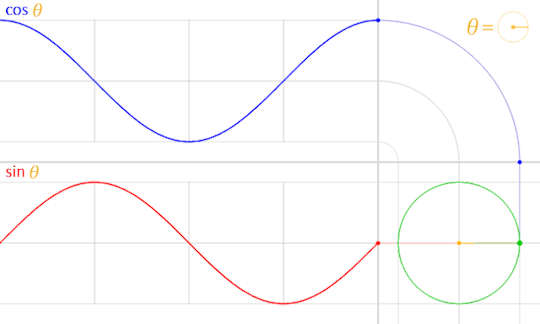
thinking about this once more because of that thing i overheard the other day regarding schooling and people hating "book learning". i quite like learning certain things from books, and often it's the circumstances that frustrate me using them productively... i wonder if people have difficulties w reading that make them associate it w a bad experience, or are poorly taught and motivated w it, and so they come to view books as the enemy. sometimes i feel like my issues came from teachers who weren't well equipped to teach the books...
like, if you read something that you don't understand, and ask a teacher for help, and the teacher doesn't know either but prescribes just memorizing something - i recall situations like that greatly frustrating me as a kid and making me feel like it was memorization w/o goal
in particular this is a criticism i never understood regarding history? people say "history is just memorizing events" which i never comprehended, b/c while that might be how you're tested the events always meant something and connected to what came before and after. an earthquake tsunami occurs in sumatra in 1907, and half the population of the island of simeulue dies. a hundred years later the third greatest recorded earthquake occurs in 2004, and their descendants evacuate the wave b/c they remembered last time. it's all connected...
ultimately i am not a teacher, but i so strongly believe that a great many issues in education come from teacher failure... and it's not like it's their fault, they're in a rough position. it's hard to teach, it's a social job after all
11 notes
·
View notes
Note
https://www.ctvnews.ca/climate-and-environment/indonesians-mark-2-decades-since-tragic-tsunami-that-killed-hundreds-of-thousands-1.7154627
9 notes
·
View notes
Text

🏮 20 years since that terrible day 🌊
December 26, 2004, 7:58 (local time), a terrible roar followed by an earthquake with an estimated magnitude of 9.1 strikes off the coast of the northern island of Sumatra, Indonesia.
It will be remembered as the third most powerful earthquake in history.
But that's not all. The epicenter, located on the ocean floor, generates waves that reach 30 meters high. The tsunami causes more victims than the earthquake, sowing destruction even in countries that did not even feel the tremors.
Indonesia is the first to suffer the waves surges and cities like Banda Aceh, are completely reduced to plains of rubble and mud.
Other people pay a high price for their lives, without warnings or alarms, due to the then serious lack of monitoring systems in the Indian Ocean.
In the following hours, Thailand, Myanmar, India, Malaysia, Sri Lanka, Maldives, Bangladesh and even the eastern coasts of Africa, Kenya, Somalia, Tanzania, Madagascar and South Africa, will suffer the same fate.
🇹🇭 🇲🇲 🇮🇳 🇲🇾 🇱🇰 🇲🇻 🇮🇩 🇧🇩 🇰🇪 🇸🇴 🇹🇿 🇲🇬 🇿🇦
The total number of victims was about 230,000, of which 20,000 were missing and never found. This will be, and is, remembered as one of the most violent disasters in history.
The world woke up to a disaster, but also to so much humanity, especially from other nations, helping, saving, donating and caring for those who had managed to survive.
Thanks: ONU, UNICEF, UNHCR, MediciSenzaFrontiere, SaveTheChildren, CARE, ICRC, IFRC, NOAA, WHO 🪷
#boxing day tsunami 2004#boxing day tsunami#tsunami 2004#tsunami#indian ocean tsunami#indian ocean tsunami 2004#never forget 2004#2004s#2004
6 notes
·
View notes
Text
Real Life Heroes (1): Tilly Smith

A 10 year old girl at the time of 2004, Tilly Smith would happen to save the lives of over 100 people while on vacation with her family.
Tilly Smith is British woman from the village of Oxshott in Surrey, England. In 2004 her family went on vacation in Thailand, where they would spend an evening on Mai Khao Beach. Unknown to the approximately 100 beachgoers, and Tilly's family, the 2004 Indian Ocean Earthquake had just occurred 150 miles (240km) from the coast of Sumatra Island, Indonesia.
The 2004 Indian Ocean Earthquake affected 18 different countries primarily, not including the thousands of tourists caught in the disaster.
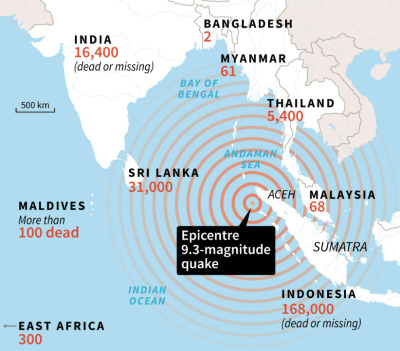
Including...
India
Indonesia
Malaysia
Maldives
Myanmar
Somalia
Sri Lanka
Thailand
Bangladesh
Kenya
Seychelles
South Africa
Tanzania
Yemen
Australia
Madagascar
Mauritius
Oman
The worst affected of these countries were Thailand, India, Sri Lanka, and Indonesia. According to Wikipedia's numbers, there were about 227, 898 casualties. The earthquake itself was a 9.2 magnitude. Many of the waves kicked up were up to 30 m (100 ft.) tall. It only lasted ten minutes...
What made the disaster so destructive and deadly was the preparedness of the nations hit. Despite the fact that the area of the Indian Ocean in which the earthquake occurred had a history of activity, no major populations were yet hit. The area was not viewed as a significant concern by nearby countries.

There were no warning systems in place. Nations instead leaned on the hope that their people would be properly knowledgeable about signs of tsunamis and have prepared their own places of evacuation. This wasn't fruitless. Many of the coastal population had zero to little knowledge about what to look out for, and especially what to do in case of disaster.
The same could not be said for Tilly Smith.
Tilly took pride in learning from her school teacher, Andrew Kearney at Danes Hill School. She learned in his geography class about the warning signs and what to do's about several natural disasters, including tsunamis.
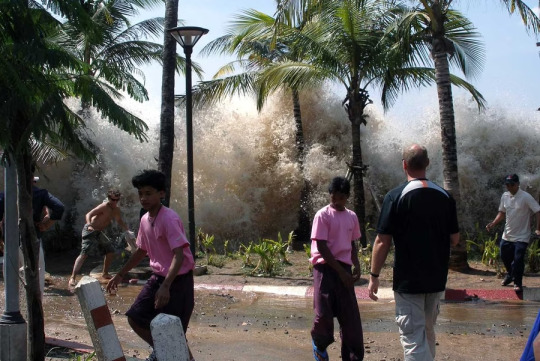
Remembering the school lesson, that morning she witnessed the signs of a tsunami on the coast.
A quote from an interview done with her in 2005 was, "The water was really, really frothy. It wasn't calm, and it wasn't going in and then out. It was just coming in and in."
She immediately went to go alert her parents. At first they did not believe her, because they didn't see any large waves over the horizons. They decided to listen to her urgency though, and came to the security guards.
While trying to convince to the security guard of the threat, a nearby by English-speaking Japanese man had her say the word tsunami. He informed the group that he just heard that there was an earthquake in Sumatra. The beach was evacuated into one the resort buildings. Quickly after, a 9 m (30ft.) tsunami crashed through the shore, the evacuated peoples narrowly avoiding the event by seconds.
Mai Khao Beach was one out of few that day which had no causalities.
youtube
Tilly Smith was awarded the Thomas Grey Special Award from the Marine Society & Sea Cadets. She earned the moniker Angel of the Beach. To this day Tilly is a face of coastal and natural disaster safety.
So what are the signs of a tsunami.
Any nearby or on location earthquakes
Loud roar from the ocean similar to a jet or train
rapid rise or fall of the water along the coast
What to do you in case of one
highest ground possible, as quick as possible
#tilly smith#tsunami#natural disasters#earthquake#earthquakes#english history#thailand#2004 indian ocean earthquake#2000s#2004#real life heroes
8 notes
·
View notes
Text
20 Years On: Remembering the Tsunami That Changed the World
Two decades ago, on December 26, 2004, the world witnessed one of the deadliest natural disasters in recorded history. The Indian Ocean tsunami, triggered by a 9.1-9.3 magnitude undersea earthquake off the coast of Sumatra, Indonesia, claimed over 230,000 lives across 14 countries and left millions more grappling with loss, destruction, and profound change. As we mark the 20th anniversary, we reflect on its enduring impact, lessons learned, and the resilience of humanity in the face of unimaginable tragedy.
A Day That Shook the World
The earthquake struck at 7:58 a.m. local time, releasing energy equivalent to 1,500 Hiroshima atomic bombs. It was the third-largest earthquake ever recorded and lasted up to ten minutes. The resulting tsunami waves, some towering over 30 meters, radiated across the Indian Ocean, devastating coastlines in Indonesia, Thailand, Sri Lanka, India, the Maldives, and even parts of Africa thousands of kilometers away.
Entire communities were wiped out in minutes. Banda Aceh in Indonesia, closest to the epicenter, bore the brunt of the disaster, with over 160,000 lives lost. Thailand's picturesque beaches, bustling with holidaymakers, became scenes of chaos and despair. In Sri Lanka, the waves reached as far as two kilometers inland, displacing over half a million people.
Global Response and Solidarity
The magnitude of the disaster elicited an unprecedented global response. Governments, humanitarian organizations, and individuals mobilized to provide immediate aid and long-term support. Over $14 billion was pledged for relief and reconstruction efforts, making it one of the largest international aid efforts in history.
Volunteers from around the world flocked to affected regions, offering their expertise and support. The disaster also underscored the importance of coordinated international responses to natural calamities and led to the establishment of the Indian Ocean Tsunami Warning System in 2006.
Lessons Learned
1. Preparedness and Early Warning Systems: The lack of a robust warning system in 2004 meant that many communities were caught off guard. Today, advancements in seismic monitoring and tsunami alert systems have significantly reduced response times and potential loss of life.
2. Community Resilience: The tragedy highlighted the importance of educating coastal communities about natural warning signs, such as receding shorelines, and implementing evacuation plans.
3. Building Back Better: Reconstruction efforts emphasized sustainable and resilient infrastructure. While challenges remain, many affected regions have emerged stronger, with improved disaster management protocols.
The Human Spirit of Recovery
Amid the devastation, stories of survival and solidarity emerged. Families reunited against all odds, strangers became lifelong friends through shared grief and recovery, and countless individuals transformed personal loss into a mission to help others. Survivors like Petra Nemcová, a Czech supermodel who was severely injured in Thailand, went on to establish foundations to aid disaster-stricken communities.
Looking Ahead
Twenty years later, the memories of the 2004 tsunami remain etched in the collective consciousness. Memorials and commemorative events are held annually to honor those lost, while survivors and their families continue to rebuild their lives. The disaster serves as a stark reminder of nature’s power and the need for continued vigilance in disaster preparedness.
As we look back on this tragic event, we also celebrate the resilience of the human spirit. The 2004 tsunami changed the world, not just in terms of geography and infrastructure, but in fostering a global sense of empathy and interconnectedness that continues to inspire humanitarian efforts today.
Conclusion
The 2004 Indian Ocean tsunami was a tragedy of unimaginable proportions, but it also revealed humanity's capacity for compassion, resilience, and innovation. Twenty years on, the lessons learned from that day continue to shape our approach to disaster management, ensuring that we are better prepared for the challenges of tomorrow.
Let us honor the memory of those we lost by committing to a safer, more resilient future for all.
Thank you for reading.
2 notes
·
View notes
Text
who wants to know abt the Sumatra 2004 major earthquake/tsunami?
..I sure don’t.
4 notes
·
View notes
Text
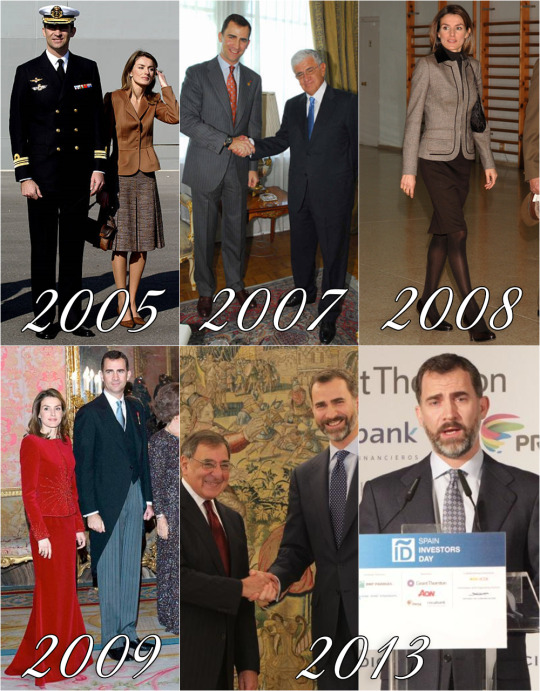

Felipe and Letizia retrospective: January 15th
2005: Send off the Navy ship ‘Galicia’ on its voyage to Sumatra, Indonesia, carrying 60 tons of humanitarian aid to Asia’s devastated areas after the tsunami waves. (1, 2)
2007: Investiture of the President of Ecuador, Rafael Correa
2008: Visited a Special Education Center in Alcorcon, near Madrid
2009: Diplomatic Corps Gala
2013: Audience at la Zarzuela & Inaugurated the 3rd Spain Investors Day
2015: Investigation National Awards 2014 .
2018: Terrorism Victims Foundation Awards.
2019: Inaugurated the International Airport in Murcia; Audience with the Minister of Foreign Affairs of Tunisia, Khemaies Jhinaoui & Audience with the Director-General of the UNESCO Audrey Azoulay
2023: Funeral of King Constantine of Greece in Athens
F&L Through the Years: 1114/??
#King Felipe#Queen Letizia#King Felipe of Spain#Queen Letizia of Spain#King Felipe VI#King Felipe VI of Spain#F&L Through the Years#January15
3 notes
·
View notes
Photo

Earthquake measuring 7.1 off Indonesia’s Sumatra island briefly triggers tsunami warning | Indonesia | The Guardian
6 notes
·
View notes
Text
Krakatoa explodes
One of the most powerful volcanic eruptions in recorded history occurs on Krakatoa (also called Krakatau), a small, uninhabited volcanic island east of Sumatra and west of Java, on August 27, 1883. Heard 3,000 miles away, the explosions threw five cubic miles of earth 50 miles into the air, created 120-foot tsunamis and killed 36,000 people.
Krakatoa exhibited its first stirrings in more than 200 years on May 20, 1883. A German warship passing by reported a seven-mile high cloud of ash and dust over Krakatoa. For the next two months, similar explosions would be witnessed by commercial liners and natives on nearby Java and Sumatra. With little to no idea of the impending catastrophe, the local inhabitants greeted the volcanic activity with festive excitement.
On August 26 and August 27, excitement turned to horror as Krakatoa literally blew itself apart, setting off a chain of natural disasters that would be felt around the world for years to come. An enormous blast on the afternoon of August 26 destroyed the northern two-thirds of the island; as it plunged into the Sunda Strait, between the Java Sea and Indian Ocean, the gushing mountain generated a series of pyroclastic flows (fast-moving fluid bodies of molten gas, ash and rock) and monstrous tsunamis that swept over nearby coastlines. Four more eruptions beginning at 5:30 a.m. the following day proved cataclysmic. The explosions could be heard as far as 3,000 miles away, and ash was propelled to a height of 50 miles. Fine dust from the explosion drifted around the earth, causing spectacular sunsets and forming an atmospheric veil that lowered temperatures worldwide by several degrees.
Of the estimated 36,000 deaths resulting from the eruption, at least 31,000 were caused by the tsunamis created when much of the island fell into the water. The greatest of these waves measured 120 feet high, and washed over nearby islands, stripping away vegetation and carrying people out to sea. Another 4,500 people were scorched to death from the pyroclastic flows that rolled over the sea, stretching as far as 40 miles, according to some sources.
In addition to Krakatoa, which is still active, Indonesia has another 130 active volcanoes, the most of any country in the world.
2 notes
·
View notes